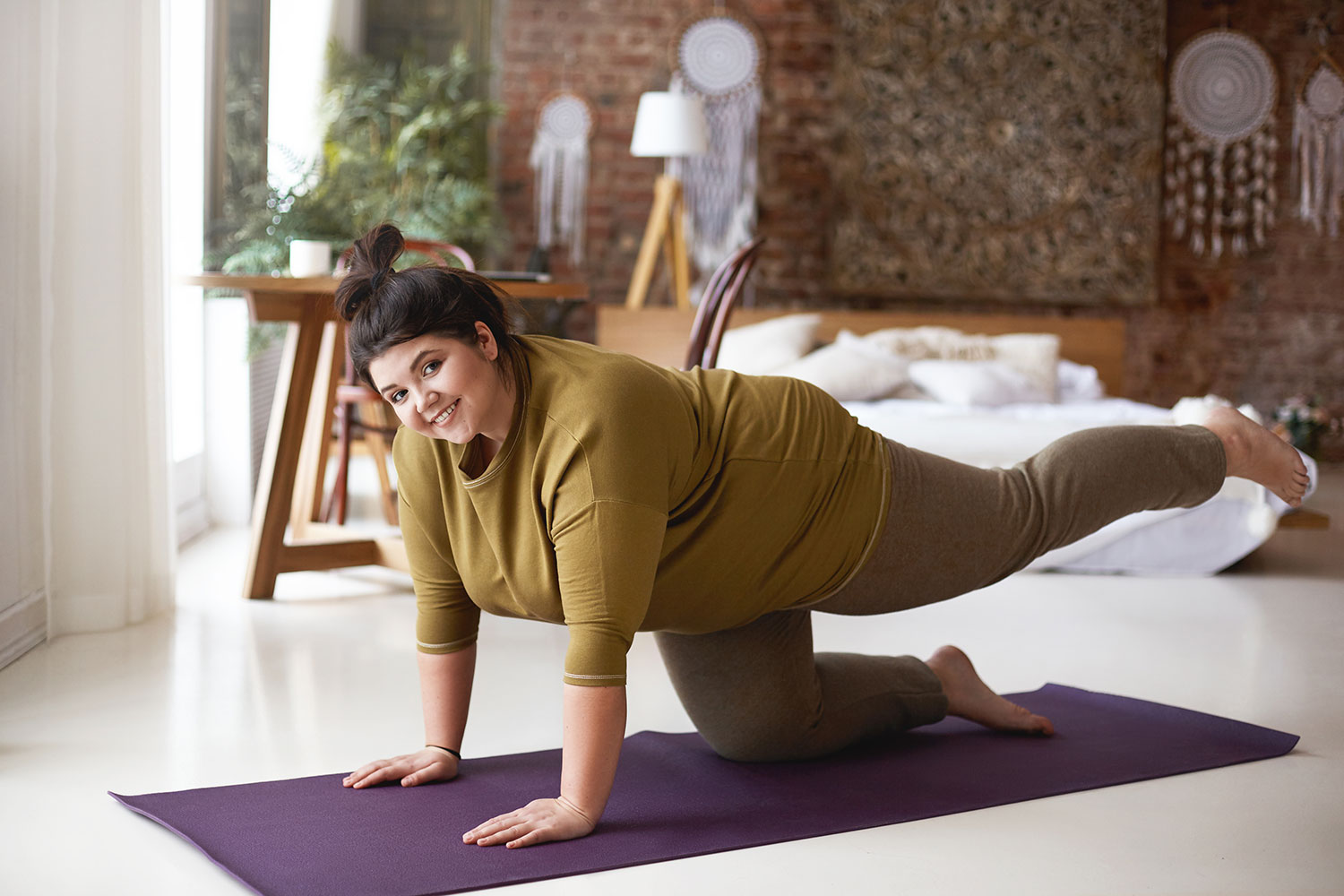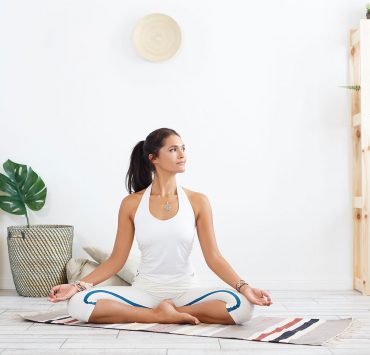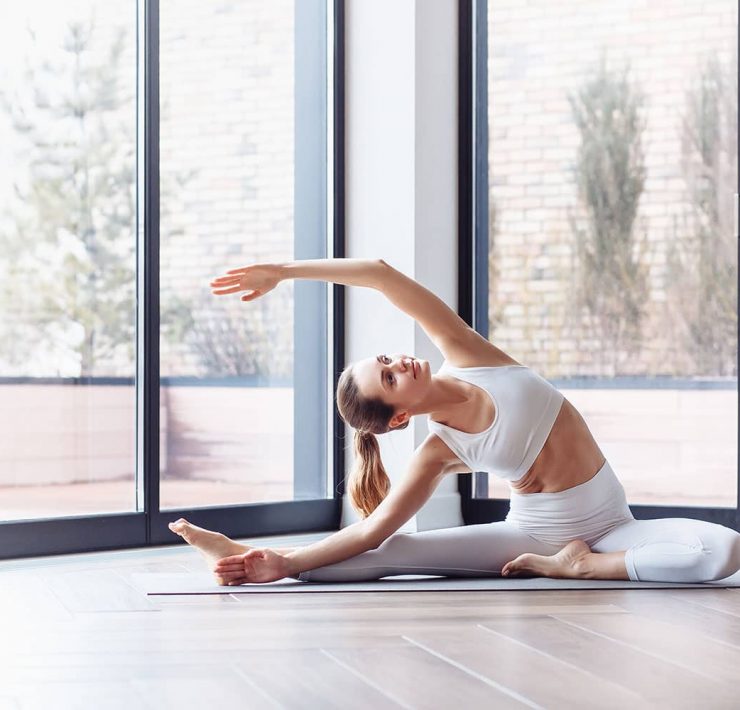
Having been a teacher’s assistant at over 50 yoga teacher…
In a social climate where women are expected to look a certain way, the struggle to be a larger-bodied yogi is real. Many practitioners with larger bodies face additional challenges in establishing or continuing a practice: curvy yogis often have to overcome body-shaming stereotypes, stigma, or images in the media. Some people even doubt that plus-sized people can practice yoga at all. None of these things are true, nor do they fit in with the yoga philosophy.
Despite what social media or social stigma portrays, yoga is a practice for all bodies. Yoga is about a spiritual and individual journey, not a pant size or body shape.
There is no such thing as a “yoga body.” Instead, any body that does yoga is a “yoga body.”
The popular misconception is that a person must be naturally flexible, skinny, or graceful to practice yoga. This is seriously flawed logic: Yoga has no limits on size, perceived flexibility, or clothing. It is a spiritual practice accessible to anyone with the dedication to try.
Yoga for Plus-Sized Practitioners

For plus-sized yogis, your practice may look different from someone else’s. But that’s okay. You are successful in your practice as long as you are continuing to grow and change, spiritually. The asanas are secondary to a full and meaningful yoga practice.
Students who do not feel like they fit the naturally thin, athletic, or able-bodied “yoga body” may be tempted to drop out of a class, force their bodies into a pose that isn’t right, or even body-shame. Yoga is for all bodies, and plus-sized yogis are just as capable of a fulfilling yoga practice as anyone. Don’t let your weight, shape, or experience level try to convince you otherwise.
For bigger-bodied yogis, a regular yoga practice may include overcoming insecurities or perceived limitations. It also may mean doing a few modifications or taking a few extra precautions. But that doesn’t make your practice any less meaningful. Yoga is a meaningful step toward healthy body image, even in spite of shaming.
Body size does not indicate whether you should or should not do yoga. Yoga is a spiritual and physical journey, one based on self-awareness and personal growth. Therefore, anyone with the dedication to practice can be a yogi.
Then Why Do Yoga At All?

A regular yoga practice has both physical and spiritual benefits.
Physical benefits of yoga practice. Yoga has been shown to decrease stress, improve flexibility, increase muscle and bone strength, lower blood pressure, improve immune system function, and promote cardiovascular health. Yoga also maintains a balanced metabolism, can aid in weight loss, and protects you from physical injury.
Spiritual wellness: A yoga practice also promotes spiritual wellness through improved mindfulness, compassion, sense of self, emotional balance, and spiritual fulfillment.
There are many physical and emotional benefits to a yoga practice – a practice for bodies of all shapes and sizes.
For larger-bodied yogis, you can try reviewing these tips and tricks to help make the practice work for you and your body:
15 Tips for Making Yoga Work for Your Body

Don’t be afraid to modify poses. Don’t ever hesitate to modify a pose to accommodate your body. While you may feel pressured to do the most advanced asanas or the deepest twists– it is important that you listen to your body. Do the asanas and the versions of them that work for you and your body right now.
Most yoga instructors will provide modifications in the flow. If they don’t? Then that’s okay, too—You don’t always have to listen to the yoga teacher or follow the exact vinyasa flow.
When in doubt, listen to your own body and do what you feel is best. Yoga should be challenging, but it should never be painful or injurious. Listen to your body and don’t feel like a lesser practitioner because you need a modified version today.
Use props. Make sure you have tested out your props, or even seek out plus-sized props. Blocks and straps will be helpful, and including them in your practice will help you progress safely and with confidence.
Get yourself a yoga mat. A yoga mat is one of the few items you should have for a yoga practice, but this is especially important for plus-sized practitioners. Mats provide cushioning, support, and grip. These will be important to improve your security on the mat.
Widen your stance. In practical terms, widening your stance a bit beyond hips’ width apart will help improve your stability and balance.
Build strength to prevent injury. Being mindful of your weight just means you understand that certain poses may increase risk of injury, require more strength, or require more attention.
Arm balances are an example where you need to be mindful of your own body weight to reduce the risk of injury. Being mindful of your weight doesn’t mean you shame yourself or set limitations; instead, draw your attention to strengthen these vulnerable spots.
Stretch frequently. A common misconception is that you must be flexible to do yoga. Actually, a yoga practice encourages flexibility over time. Make sure you include a little extra stretching in (or outside of) your practice to reduce the risk of injury or strain.
Take it slow. Go at your own pace, both in classes as well as in your practice as a whole. This encourages you to listen to your own body. Don’t rush into or out of poses, and if you end up a little behind the flow of the class? Then that’s okay. You’re on the mat for you and your own journey.
Seek out body-positive classes. Going to a body-positive class is a great way to increase confidence, gain a sense of community, and learn about safe modifications. Find teachers who have experience with plus sized students or cultivate a body-positive atmosphere.
Work with gravity, not against it: Use props and do lots of floor work to allow for muscle relaxation. You can manually move parts of your body around, too. Experiment with what works for you.
Break down poses into individual parts. Breaking down complex poses into smaller parts allows us to understand all the physical actions required to perform it. Students can master parts of an asana before putting it all together.
Expect some soreness. Soreness is good, and leads to a stronger tomorrow. Expect soreness, but also plan for restorative yoga or rest days.
Avoid trying to do a pose to deep or too fast. Focus on form and breathing if you can’t complete a whole pose. This falls in line with doing modifications when necessary, but don’t be ashamed to take things slow and easy to prevent injury. Go as far as you can, but never jerk or strain to achieve that “perfect” asana (“perfect” doesn’t exist!).
Be positive. Keep a progress journal, or document your progress. Stay positive, and don’t compare yourself to others. Practice self-love on and off the mat.
Know that it’s not all about size. There is no one type of “yoga body.” Yoga isn’t about weight, body shape, or pant size. It is a spiritual journey with a physical practice, but can be accessible to everyone. Let yoga be a source of empowerment, not limitations.
Listen to your body. Respect your body and its limitations, but don’t let your limitations define you. Listen to the difference between “hurts so good” vs. “I pulled a muscle.” Listen to what your body is telling you, adjust accordingly.
For example: Arm balances usually require that you put more weight on your wrists. Instead of competing against other classmates to achieve an arm balance (and risk hurting your wrists), focus on building strength and endurance in your arms and core. Honoring your body allows you to respect its limitations and grow beyond them.
Bonus: Try These Poses for Plus-Sized Yogis

The following poses are a great start for a beginning yogi, regardless of body size. You can also find a list of appropriate modifications for some of the more common – but not always curvy body-accessible – poses.
Modified Chaturunga and Upward-Facing Dog
Bonus: Check Out These Classes

These online classes promote body positivity, self-love, and appropriate modifications for a beginning plus-sized yogi.
Curvy Yoga Beginner’s Sequence, by Lorna
Jessamyn Stanley’s 8-minute yoga for self-love
45-minute Body Positive Yoga Class, by Body Positive Yoga
15-Minute Morning Wake-Up Practice by Curvy Yoga
20-Minute Hip Openers with Jessamyn Stanley
Gentle Seated Practice with Helen Camisa
Heart-Opening Sequence for Self-Love, by Valerie Sagun
Body Positive Yoga Classes with Amber Karnes
Remember: There is no “one size fits all” yoga, just like there is no “yoga for all” class. Each of our bodies has different needs, so don’t feel guilty or embarrassed to listen to what your body is telling you.
Celebrate your choice to overcome social stigmas, perceived limitations, or even social fears by stepping on the mat. Not every yoga class can meet the needs of a plus-sized yogi, but these tips, classes, and instructors can help anyone with a bigger body feel at home on the yoga mat.
Remember: Yoga doesn’t care what you look like. There is no “yoga body,” because any body that does yoga is, in fact, a “yoga body.” Your body is your own; by honoring it, staying positive, and being mindful in your journey, you can have a fulfilling yoga practice.
What's Your Reaction?
Having been a teacher’s assistant at over 50 yoga teacher trainings worldwide, Rebecca Rebecca has a firm grasp on the fine art of yoga and meditation. In her work, she carefully reflects on a vast expanse of knowledge to help others find peace in both body and mind.















Fantastic article, only criticism is the picture in the header is a little uninspiring and negative! Some really great advice and tips, thank you .